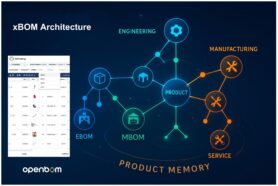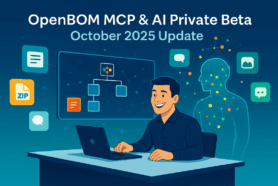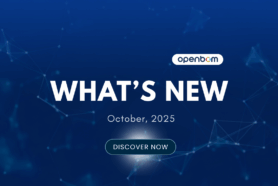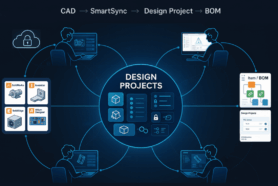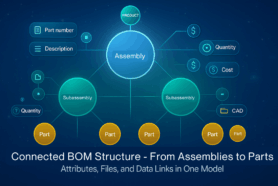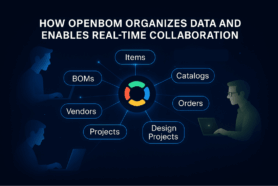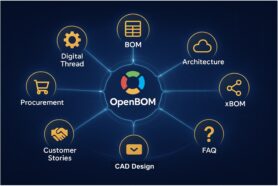
According to the recent research of CIMdata, about 66% of industrial companies participating in their recent study about SaaS PLM are looking for cloud solutions right now. While by itself the number is not shocking, what was very remarkable is to see the reasons companies are looking how to advance into cloud PLM technologies. According to the same review, the main reasons why companies are moving to the cloud are not about features and functions.
Why Cloud PLM?
The main challenges companies face today around existing PLM platforms are related to the fact that all these old products are slowing down company digital transformation. Here are a few questions CIMdata identified as leading to the decision to explore cloud and SaaS PLM:
- We want to pursue a digital thread/digital twin strategy and need to understand how others plan to address this need.
- We want to define our digital thread from “idea through life” as suggested in CIMdata’s PLM definition but do others see the problem differently? Where are they in their digital thread journey?
- Our IT group is pushing us to adopt cloud solutions. Are they ready for “prime time,” and are others adopting them?
Legacy PLM challenges
For many years, PLM was considered a heavy enterprise system that required local deployment, configuration, and implementations. Companies were sending PLM on CD ROMs via FedEx, demanding service teams to work months and sometimes years to deliver desired PLM roadmap. This is how PLM was pictured in the big enterprises. The situation was different in small and medium-sized companies, but it didn’t make it easier – most PLM initiatives were ad-hoc solutions on top of file management systems, Excels, and local databases.
On top of these challenges, most PLM systems were heavily customized and introduced so-called “release lock” when a company cannot move to the new release which is incompatible with customizations done in the company.
Why SaaS PLM?
Cloud technologies created a huge enabling environment for engineering and manufacturing companies. It includes technological platforms – computing, databases, and other infrastructure. But this is not the only difference. Cloud technologies finally provided a way for manufacturing companies to work together, communicate and share information instead of exporting/importing Excels from PLM systems to be sent to other companies, departments, systems, and other data sources.
Data linking is one the biggest opportunities behind technological innovation that is coming together with cloud computing and cloud PLM enabling simultaneous and instantaneous data access across the globe connecting manufacturers, contractors, and their suppliers together.
Not Every SaaS PLM Is The Same
While the “cloud computing” word is everywhere these days and all PLM vendors publicly announced their support for cloud and SaaS solutions, not all these solutions are the same. Therefore understanding the differences between multiple platforms and solutions and technologies is important. Here is my simple classification of the solutions you can use for your decision-making purposes.
1- Hosted Legacy PLM platforms
In this group, you can see all platforms and PLM applications that can be delivered both on-premise and hosted using one computing infrastructure. As long the environment is available in both options, you should realize that it is not a solution that originally was on-premise and can be hosted in some cloud infrastructure. Not all these “hosting” implementations are the same. Therefore if you decide on one, ask about flexibility, data modeling adaptation, and customization. Some of the compromised solutions limited these three when delivering cloud options.
2- SaaS Platforms
These platforms are only available within cloud environments and cannot be delivered on-premise. This means these platforms deliver services and were developed with the cloud in mind. Even so, one size does not fit all and there are substantial differences between products in this range that you should be aware of. Check G2 PLM reviews to learn more about different platforms.
OpenBOM vs Legacy PLM: 3 Fundamental Differences
Earlier this week I was presenting OpenBOM to one of our prospects, a large automotive OEM. It was very interesting and refreshing to get a confirmation about their decision process and intentions to research various cloud PLM platforms as an option to implement their PLM strategies.
The question about differences between OpenBOM and legacy PLM platforms was one of them because the prospect was interested in getting a comprehensive answer to the question – What can OpenBOM do that “another legacy PLM” cannot?
I have to agree, legacy PLM systems were developed for the last 30+ years and they have tons of features and can serve their customers well, but… And this “but” is becoming very-very important if you think about the reasons I’ve been talking about above why companies are looking for cloud solutions. Here are my 3 fundamental differences.
1- Multi-tenant data sharing and collaboration
In legacy systems, each database is separate and data from one database are not going smoothly to another platform. You need to export it Excel and send it over using email or FTP sharing. The fundamental difference is data models and collaborative capabilities. At OpenBOM you can get people added to your organization from every company for role-based access or separate data sharing. Once, data is shared multiple people can get access to this data (under company access control restrictions). Different people can access this data seamlessly inside organization or outside. OpenBOM patented BOM collaboration mechanism delivers results.
2- Simplicity and ease of use
Simply put where you need to make 15 clicks in old-school PLM systems, you can do it much easier using OpenBOM. You cannot explain it, but you can touch it by registering to OpenBOM for free and trying it out using multiple data.
3- Data Modeling Flexibility
The demand for flexibility is huge. Frist SaaS platforms were hardcoded applications hosted in the cloud to deliver a specific set of functions. Check old SaaS products developed back 20 years and you will see the pattern. The reality of modern manufacturing is to have full flexibility of the data and behavior while also getting an out of the box features set. Engineers’ demand for flexibility is to make PLM as flexible as Excel. Engineers are fundamentally conservatives and afraid of changes. So, they look similar behavior implemented differently. At OpenBOM we took familiar spreadsheet like behavior and made the system built around this data modeling experience.
Conclusion
OpenBOM is modern cloud-native data management and collaboration environment. It is flexible and provide a unique level of flexibility combined with collaboration and global presence online. There are many more differences between OpenBOM and legacy systems, but I’d like to give you one more. You can actually touch it by yourself – register for OpenBOM and use it for free with our 14-days free trial that allows you to try out all of our functions.
Why is this important? The main reason why companies are looking for cloud is digital transformation and the interest of companies to disconnect from old fashion ways of work. Modern digital platforms are taking many of company IT responsibilities, but also open tons of new opportunities about how to work in a modern digital world.
Check out OpenBOM today – REGISTER FOR FREE and start a full 14-days trial.
Best, Oleg
Join our newsletter to receive a weekly portion of news, articles, and tips about OpenBOM and our community.




